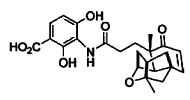In the run up to the Football World Cup, it was inevitable that press releases would starting dribbling in from the media relations departments of companies, research establishments, and learned societies, each tackling difficult subjects and presenting them as a game of two halves with some vague footy. The ultimate goal as ever to get their name in the press…
Well, the Institute of Physics is no exception to the rule, obviously, basically, at the end of the day, they just kicked off with their first soccer related release, hoping to get a pre-emptive strike at that goal and hoping to avoid a penalty playoff:
Apparently, Nick Linthorne has discovered how players like Gary Neville can achieve the perfect long throw-in. Writing in Physics World’s June issue Linthorne puts a new spin on throwing showing how the physics of projectiles can be used to calculate the optimum angle at which a ball needs to be released to achieve the longest possible throw-in. The article describes how the optimum angle is much less than physicists previously believed.
I am now just waiting for the Royal Society of Chemistry to come racing up the wings with a press release on how novel polymers used in soccer-ball manufacture will allow footballers…blah…blah…blah….
Someone is bound to cry foul before it’s all over.
Oh, by the way, I’m talking about football here, not the padded-up version of rugby played by Americans, that we know as American Football. If you’re interested in the physics of throwing a football, then check out this Youtube clip:

